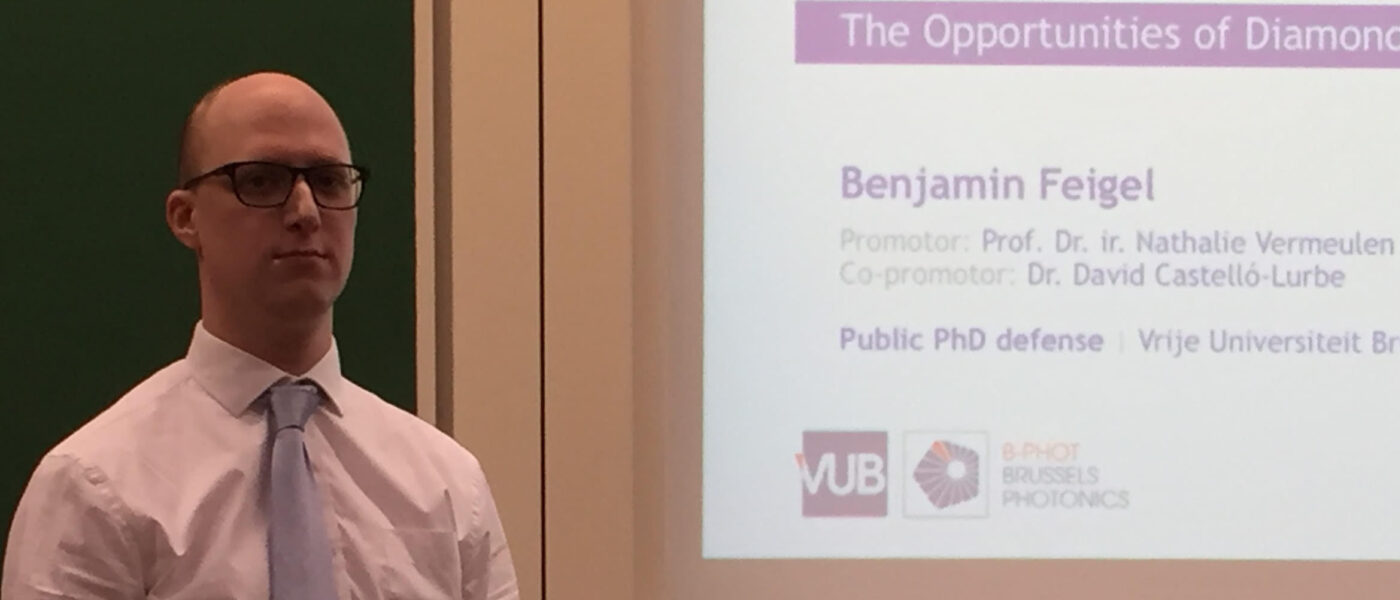Doctor Benjamin Feigel graduated with highest honors

Applications ranging from optical coherence tomography for the cross-sectional imaging of biotissue such as human skin, to optical telecommunication over large spectral bandwidths, can greatly benefit from such integrated photonic components.
In the past years, much progress has been made in the realization of integrated photonic devices based on waveguides–mostly made of silicon (Si)–that convert light of one specific color into light of another particular color, a process known as wavelength conversion . Also photonic chips emitting light at a broad range of colors based on the supercontinuum (SC) generation process were experimentally studied in, e.g., Si. Both phenomena depend on nonlinear optical effects in the waveguide material.
However, even though Si-based wavelength convertors and SC light sources have already been extensively investigated, these devices cannot be deployed in practical applications where short wavelengths in the visible (VIS) or ultraviolet (UV) light are needed, as the transparency window of Si does not cover these spectral regions.
The goal of his PhD research was to numerically demonstrate new on-chip nonlinear optical components that outperform existing Si devices and that are useful for a wide range of applications, also those requiring short wavelengths. To this end, Benjamin numerically investigated wavelength conversion and SC generation in novel integrated waveguides made of carbon-based materials: synthetic single-crystal diamond and 2D graphene. The unique properties of diamond and of graphene have made it possible to achieve very high light-generation performances over a wide range of spectral domains, including the VIS and UV.
In this thesis, Benjamin first develops his own advanced simulation tool to predict the linear and nonlinear optical behavior of integrated waveguides. Subsequently, he designs and models ring-shaped diamond waveguides for Raman lasing (relying on wavelength conversion), and straight diamond waveguides for SC generation in the VIS range. Finally, his simulation results for SC generation at UV wavelengths in graphene-covered diamond waveguides showcase the potential of graphene to enhance the nonlinear optical performances of the underlying integrated waveguides.
With the promising results obtained in his work, and with further (practical) exploration of diamond devices and graphene-covered components, Benjamin hopes to ultimately enable a widespread deployment of these devices for unexploited VIS/UV applications.
Benjamin closed his PhD presentation thanking all of his colleagues who supported him during his PhD research, and especially his promotors Prof. Nathalie Vermeulen and Dr. David Castelló-Lurbe, and his managing director Prof. Hugo Thienpont.
Congratulations Benjamin with the excellent results!
